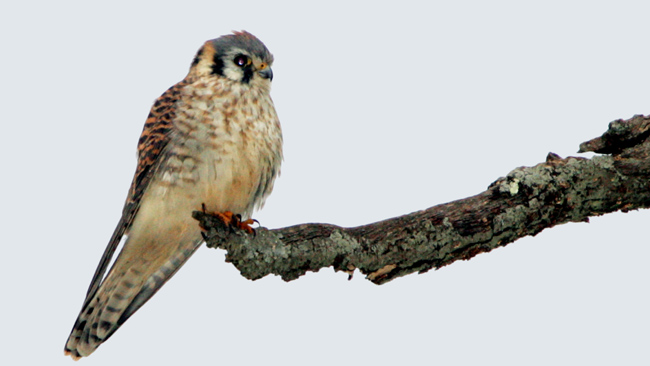Photo(s) From the Field
Bird’s eye view from a peregrine falcon nest site in Atlantic City
by Ben Wurst, Habitat Program Manager

Since 1985, one boardwalk casino has been home to a pair of peregrine falcons. On the 23rd floor of the Hilton (originally named as the Golden Nugget, then Bally’s Grand, The Grand) in Atlantic City a pair of peregrines have nested since 1988. Since then only two females have ever occupied the territory there. The first female nested there until 2002. In October of that year she was found injured after it was believed that she had struck an object. She was transported to The Raptor Trust for treatment, but unfortunately died later that night. She was the oldest nesting peregrine in New Jersey at the time (she was born in 1985 at a nest site in Sedge Island WMA) and was a NJ native falcon. She raised a total of 25 young during the 15 years that she nested there. She was known for her tenacious attitude and brave assaults on biologists and photographers by dive-bombing them “fighter jet style” to protect her young.
Here is an excerpt from the article “Storied A.C. Peregrine Dies: State’s oldest nesting falcon was N.J. native” in our old Conserve Wildlife newsletter from 2002:
“She’d been around nearly as long as I’ve been a biologist,” says Clark. “I felt a kinship from our many years at her nest, banding her young.”
Last June, as Clark was returning the bird’s two chicks to the ledge after she had banded them inside the penthouse suite, the biologist noticed the fierce female accidentally glance one of the building’s structural columns. But Clark will remember more all the times the bird was at her fighterpilot best, strafing Clark, her assistants and the news photographers who bravely clambered out onto the narrow ledge to record what had become a much publicized, annual banding ritual. In fact, in 1997 within a span of several minutes the bird was able to strike the heads of both an assistant biologist and a photographer. That’s why Clark, since then, had been banding the chicks inside.
Ironically, it took her death to solve the final mystery of her existence. In 1994, thanks to a remote-controlled camera, Clark was able to read all but the last digit on her leg band. The numbers confirmed her 1985 hatch date, but without that missing digit she could have been fledged anywhere from Maine to Virginia.
When Clark recovered the fatally injured bird, she recorded the entire banding number, and quickly learned the female had been hatched atop a nest tower erected in Barnegat Bay’s Sedge Islands Wildlife Management Area, just 25 miles north of Atlantic City. One of the first offspring of restored, wild-nesting peregrines in New Jersey, she had been a lifelong resident of the Garden State.” written by Bruce Beans.

Today, the only other female peregrine to nest on the ledge of the penthouse floor will be 13 years old this summer. She originated from a nest site in coastal Virginia in 1998. In early 2009 we placed a deterrent (wood and pigeon spikes) along a portion of the ledge to deter the pair from nesting. The preferred nest site is a nest tray where the pair can be more closely monitored by casino staff and butlers (Mel and Pete) on the penthouse floor and it also has more protection from harsh weather conditions. The deterrent worked quite well last year, but it wasn’t quite large enough. The female proceeded to nest directly next to our deterrents (see photo below). She was allowed to nest there, but after her young were banded, they were placed in the nest tray on the west side of the building.
Yesterday Kathy Clark, zoologist with the Endangered and Nongame Species Program, and myself visited the site to measure the ledge where additional deterrent will be placed next week. The nesting pair was present and aggressive as usual. The female dove at us both as we were out on the ledge. The spirit of the old “storied” peregrine has certainly been passed on to this bird. The new deterrents will be installed next week. Peregrines begin nesting in March.
Learn More:
- View a nestling banding video from 2010
- 2002 Conserve Wildlife Newsletter
- Peregrine Project Information
- Peregrine Information – NJ Fish and Wildlife
- Peregrine Falcon life history, status, and conservation efforts
- 2010 Peregrine Project Report





